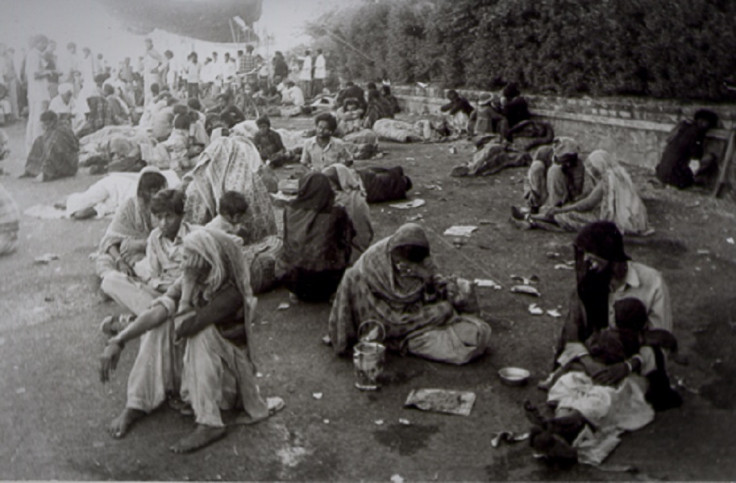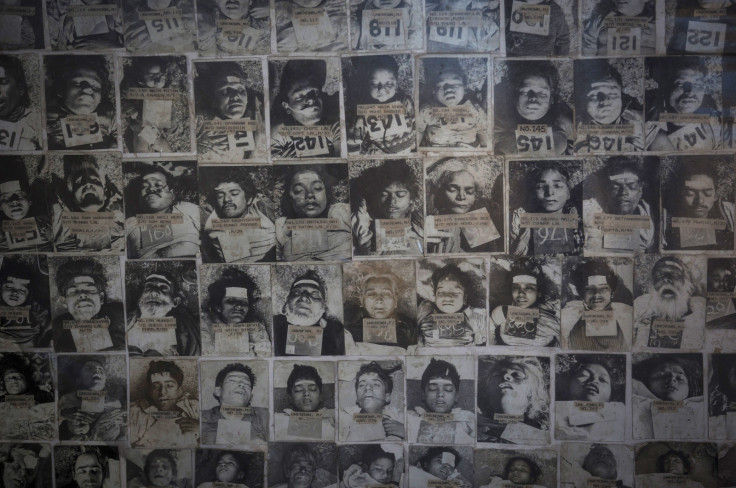Bhopal disaster 30th anniversary: Facts about the world's worst industrial tragedy

The Bhopal disaster was the worst industrial tragedy in history, with an estimated 25,000 people killed as a result.
On 2 December 1984, a Union Carbide plant in Bhopal, India, started leaking methyl isocyanate (MIC) – 27 tonnes of the deadly gas was released, spreading throughout the city and exposing half a million people to the gas.
To mark the 30<sup>th anniversary, IBTimes UK looks at some of the key facts of the tragedy and the effort to bring those responsible to justice.
What happened?
On the night of 2 December, the chemical gas spill began. The cause remains unknown, however none of the six safety systems in place were operational, so the MIC quickly spread throughout the city.
Why did it happen?
Union Carbide built the factory in the 1970s in the belief the area was ripe for the pest control market. However, local farmers could not afford their product and it ceased active production in the early 1980s. Maintenance fell into disrepair and when an employee went to flush a corroded pipe, water ended up flowing freely into the largest MIC tank. Exposure to the water led to a chemical reaction – the tank was blown from the concrete it sat in and spewed out MIC.

What systems were not working?
Staffing at the MIC unit had been reduced from 12 to six people. The refrigeration unit to cool MIC and prevent chemical reactions had been shut for three months. The vent gas scrubber had been shut down for maintenance. The flare tower had been shut off. There were no alarm systems in place. Water sprayers could not reach the flare towers. The temperature and pressure gauges were malfunctioning and the MIC storage tank was filled beyond capacity.
How did the gas spread and what was the effect?
The gas created a dense cloud over the city of Bhopal, exposing half a million people. Residents woke up in coughing fits, their lungs filling with fluid. Within just a few days, thousands of people had been killed, with many dying from cardiac arrest and respiratory failure.
How was it described?
One survivor, Champa Devi Shukla, said: "It felt like somebody had filled our bodies up with red chillies, our eyes had tears coming out, noses were watering, we had froth in our mouths. The coughing was so bad that people were writhing in pain ... People were only concerned as to how they would save their lives so they just ran."

What were the other health effects?
As well as respiratory problems, hundreds of thousands of people suffered adverse health effects. These include blindness, gynaecological disorders, cancer, brain damage and birth-defects. In 1999 a report found that mercury levels were between 20,000 and six million times what should be expected. The water also contained 50 times the safe limits of trichloroethene – a chemical found to impair foetal development.
What was the death toll?
It is impossible to say how many were killed as a result of the disaster. The number of victims also continues to rise as a result of long-term health effects. Workers who picked up the dead from the streets estimate they handled around 15,000 bodies in the aftermath, which were taken to be buried in mass graves or cremated on pyres.

Who is to blame?
Union Carbide Corporation claimed the water entered the tank as an act of sabotage. The Indian government and activists say poor management and maintenance led to the backflow of water, triggering the disaster. Union Carbide reached a partial settlement with the government in 1989, paying $470 million in compensation – amounting to as little as $350 each to victims. The company was also charged with culpable homicide, but this has never been resolved as the company has not appeared before an Indian court.
What is happening now?
Dow Chemical completed a takeover of Union Carbide in 2001. Campaigners for justice in Bhopal claim that this means Dow inherited all of Union Carbide's assets and liabilities. Dow, however, claims it has no responsibility to complete a clean up of the site, to compensate victims or to disclose the composition of the gas leak.
© Copyright IBTimes 2025. All rights reserved.






















